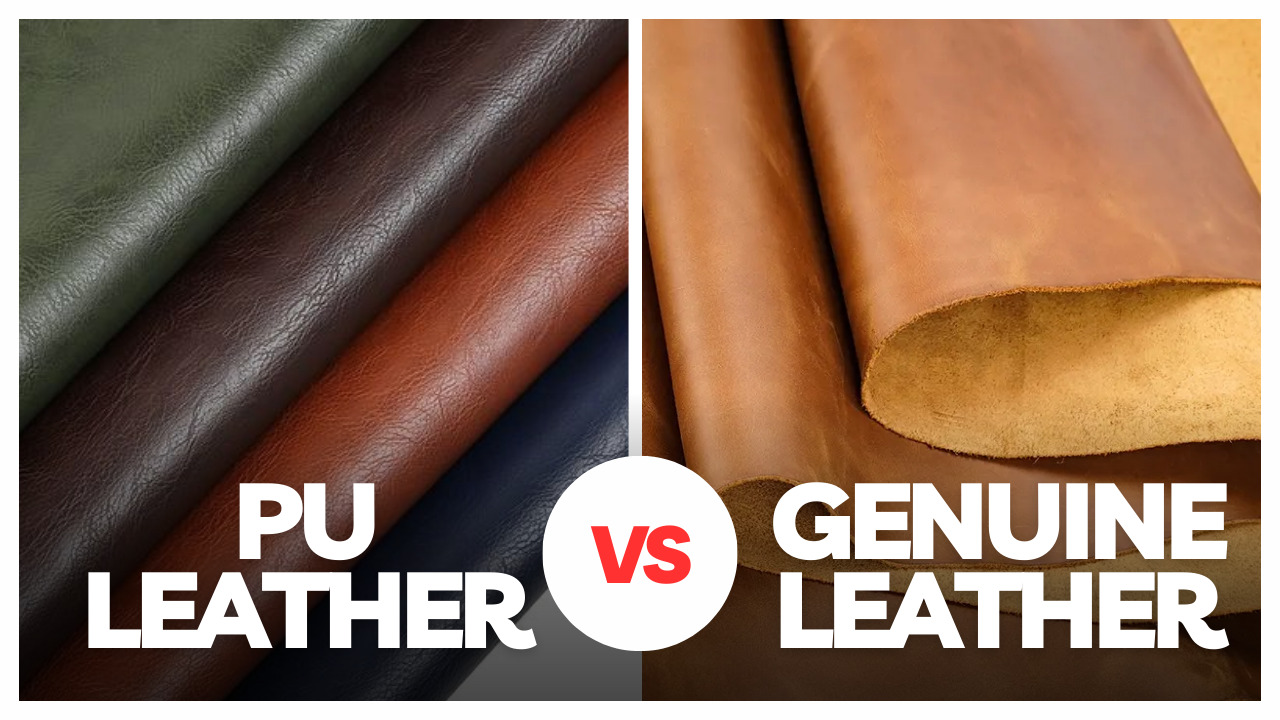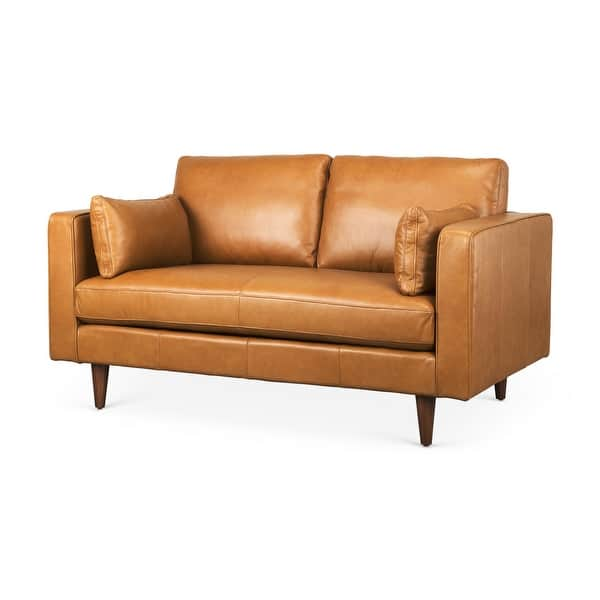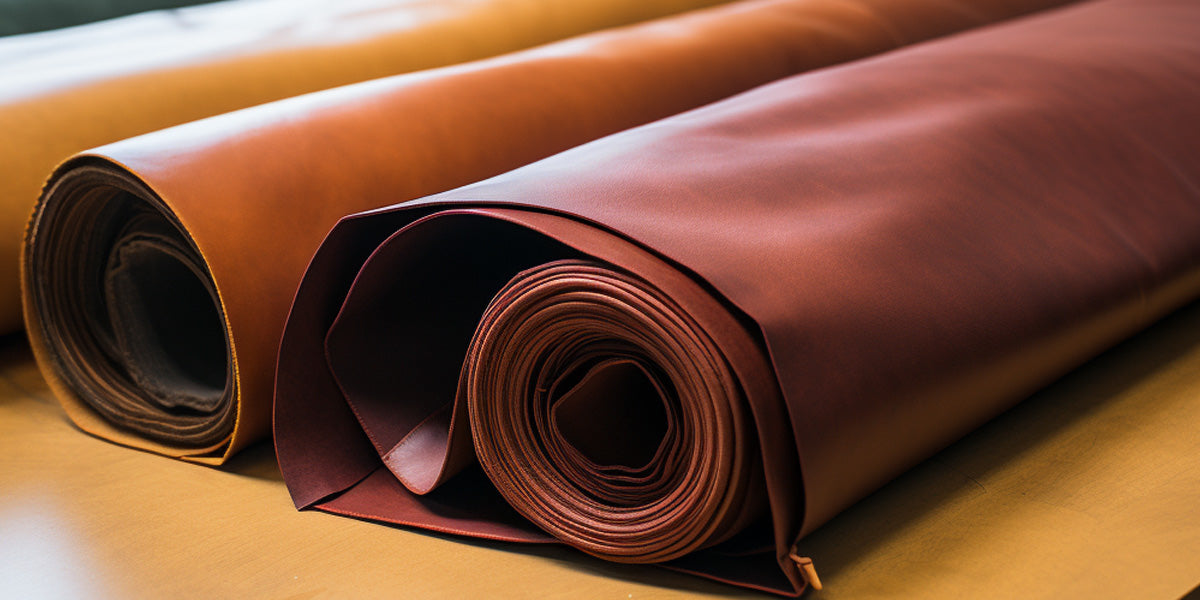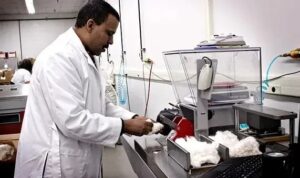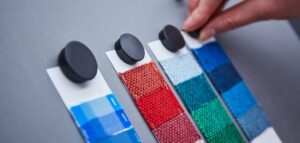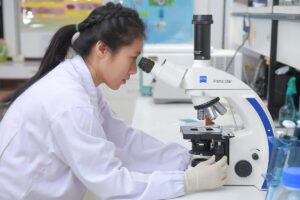The global leather alternatives market is projected to reach $45 billion by 2025. Companies and consumers are fast be coming more open to leather alternatives with the rise of environmental and societal concerns, as well as animal welfare. In recent years there has been an abundance of research and technological advancement to lead the way towards faux leather and leather alternatives. These alternatives tend to replicate the aesthetics of real leather and aim to share similar properties, making them a competitor in the leather goods market.
The search for ‘vegan leather’ has increased by 119% in the last six months, indicating the great opportunity for brands and designers to implement leather alternatives into collections. Leather substitutes are being researched in labs or explored through organic materials and waste research, and the properties are always improving. While leather alternatives were once an interesting concept, technological advancements have allowed a variety of materials to now be commercially viable with large companies like Stella McCartney, Adidas, and Patagonia harnessing these materials in their collections. These alternatives aim to tackle social, ethical and/or environmental obstacles that the textile industry is incrementally facing. As the popularity of fashion and trends continues to rise, so does awareness around material innovation and the desire to not compromise on design and the environment.
As in all eco-design approaches, before choosing a material, it is essential to analyze the environmental impact of the entire life cycle of a product and to compare different scenarios in order to identify which one is the most beneficial for the environment.
There is no ideal material, it is necessary to choose a material according to the environmental attributes that we want to give in our product.
PU Leather
The most common material to replace real leather is “synthetic leather”, this material is made of plastic in the form of PVC or PU. It can imitate very well the different aspects of leather and is available in many colors and textures. It is important to remain vigilant about the durability of “synthetic leather”.
PU is often referred to as vegan leather or pleather (plastic leather) as its properties are similar to animal leather. Polyurethane leather was one of the first leather alternatives on the market and is one of the most common substitutes for brands looking to move away from animal leather. PU is a petroleum based synthetic that can be dyed, embossed and printed to a variety of different colours and textures. Although not necessarily an ideal ecological substitute, companies like Stella McCartney use water-based and solvent-free PU as a more positive alternative, while Matt & Natt use bio-based PU instead of petroleum based. As Polyurethane leather is created in sheets, the backing can also be made in more sustainable materials such as recycled polyester or organic cotton.
The main difficulty with using PU as a substitute in crafting accessories is that it doesn’t always mould or form in the same way as regular leather, and can often melt or burn in production facilities. Although soft and water resistant, PU does not have a long life-span; once its useful life is over it must be placed in landfill as it is not recyclable or biodegradable. Despite this, PU leather is the most common and economical leather alternative used in the fashion industry.
Characteristics of PU leather:
- Water resistant
- Stain resistant & easy to clean
- High abrasion resistance
- Leather appearance
- Soft
- Easily dyed
Many types of leather alternatives
Besides that, new materials of plant origin are emerging, including from mushroom, cork, hemp, pineapple, eucalyptus, apple…
Among these materials, it is frequently the “by-products” that are used in the manufacture: the skin of the apple, the pineapple leaves or the residues of hemp fiber.
These manufacturing processes use a raw material that is basically a waste product of the food industry (like leather) or agriculture, the use of the plant product is therefore optimized.
Although these materials are of vegetable origin, it is noted that they frequently use binders of petroleum origin.
Fish skin leather
Though not vegan, fish skin leather can be more environmentally sustainable than cow leather. Similar to snakeskin in looks and feel, fish skin is obtained as waste from food production and is used for bags and accessories and the luxury industry. It is more durable than conventional leather, because of the cross fibres present compared to the unidirectional fibres of cow leather. Iceland (salmon, cod, perch, etc) and the Amazon (Pirarucu fish) are the major production centres.
Iceland’s Atlantic leather makes fish skin leather that can also be vegetable tanned, is sourced from sustainable farms and is produced in a factory that runs on green energy.
In the Amazon, Osklen and Nova Kaeru produce Pirarucu leather with a recognised sustainable management plan that ensures a continued food source and livelihood to the local population. It also requires 10x less land, ensures lower carbon emissions and no deforestation compared to conventional Amazonian cattle-bred leather.
Characteristics of Fish Skin Leather:
- Water resistant
- Durable
- Can be dyed
- Biodegradable
Recycled leather
Recycled leather benefits from the look and feel of real leather without requiring new hides to be sourced. It comes from the offcuts and scraps of both pre-production and post-consumer waste. The leather waste is first shredded and then blended with resins and catalysers to mould the fibres together to make a new recycled leather that can then be dyed and reused like new leather.
The process of making recycled leather uses 90% less water and produces zero material waste1. Although seemingly an environmentally positive substitute, recycled leather isn’t as strong and durable as new leather and doesn’t always pass safe chemical tests. As the offcuts and scraps can come from a variety of products and countries, there are challenges in traceability of where the original leather comes from, meaning that banned chemicals and substances can be traced in the recycled leather through unknown sources along the supply chain.
Characteristics of Recycled leather
- Flexible
- Warm
- More sustainable
- Water resistant
- Easily dyed
Coconut leather
This newly developed non-woven material has the feel and look of leather and is both flexible and durable. It is entirely made from bacterial cellulose and is grown on agricultural waste from the coconut industry.
The material is a byproduct of the coconut industry and uses the waste-water that is discarded for the harvesting of the coconut flesh along with bacterial culture. Once the bacteria and water ferment, a jelly-like substance is created that can then be reinforced with natural fibres and resins to mould into a sheet. Coconut leather can be naturally dyed with limitations to the range of colours, textures and prints. As the material is fully organic and natural, it can be placed in a compost to degrade once it is no longer of use.
Characteristics of Coconut leather
- Durable
- Compostable
- Mouldable and flexible
- Water resistant
- Range of thicknesses
Apple leather
A by-product of the food industry, apple leather is made with a minimum of 50% apple skin and core waste. Frumat founded this leather substitute in the largest apple growing region in Italy after seeing the amount of waste produced in the apple industry.
Aesthetically it resembles leather but it has more of a paper feel than normal leather or other leather alternatives. As it isn’t 100% organically derived, there is the possibility of having different backings and coatings to allow for different effects and thicknesses for different functional or aesthetic purposes.
Characteristics of Apple leather
- Leather appearance
- Easily dyed, embossed or printed
- Water resistant
- Breathable
- Range of thicknesses
Pineapple leather
Pineapple leather has been receiving a lot of attention in recent years due to its textural resemblance to leather. Piñatex pineapple leather can be dyed and coated with different metallic finishings, making it very versatile as a fashion textile. The leaves are a byproduct of the pineapple food industry and makes use of its ‘waste’ while also providing additional income for the farmers, making it an ecologically and socially responsible material.
As a non-woven textile it resembles full- grain leather and can easily be stitched into commercially viable products. Some brands that are currently using Piñatex as a material in their collections include Hugo Boss, Rombaut, and Bourgeois Boheme.
Characteristics of Pineapple leather
- Durable
- Can be dyed
- Coatings & limited texture applications
- Lightweight
- Easily cut & stitched
Mushroom leather
Various companies are researching into mushroom leather or mycelium as an alternative to leather. One particular company, MycoWorks, grows mycelium leather to almost any customisable size, shape and texture in a lab. By controlling the growing conditions such as temperature, humidity and CO2, it is possible to modify some of the fibre density. Although currently grown in sheets, companies are experimenting to see the possibilities of growing the mycelium into different shapes or moulds.
Since the material can be grown to a desired size, there is no excess waste. Lab grown mushroom leather takes a fraction of the time, resources and chemicals in comparison to animal based leather production and produces a fully biodegradable material1.
In 2020, a new leather consortium was founded by Adidas, Lululemon, Kering and Stella McCartney, investing seven figure sums into Bolt Threads, to commercially scale up their mushroom leather called Mylo.
Characteristics of Mushroom leather
- Flexible
- Breathable
- Water resistant
- Light yet insulating
- Biodegradable
Cork Leather
Cork has a very distinctive look and doesn’t aesthetically resemble leather as a substitute textile, although it shares similar properties. Cork has a variety of uses and is economical as a material. Annually cork forests produce approximately 200,00 tonnes of cork1. In a cork oak tree’s lifetime it can produce up to 18 harvests of bark, making it a renewable material that doesn’t impact the tree’s natural lifecycle through extraction. The workers who remove the cork bark from the trees are called extractors and are very precise in ensuring that the tree is not harmed during extraction and only the bark is carefully removed.
The extraction process produces no waste, and benefits the health of the tree and extends its life. Once harvested, the cork is air-dried naturally for 6 months before it is processed. The cork is cooked and steamed to be more elastic, and then flattened and moulded into a sheet of textile that can be sewn onto a backing that is usually cotton or polyester. At the end of the lifecycle, cork is a fully recyclable material that doesn’t degrade much in quality once recycled into a new sheet of cork.
Characteristics of Cork Leather
- Recyclable
- Durable
- Lightweight
- Can be dyed
- Water resistant
- Easily cut & sewn
Cactus leather
Cactus leather is made from nopal cactus (also known as prickly pear) leaves and is currently produced by Adriano Di Marti, a Mexican company. Nopal cactus is abundantly available in Mexico and requires no water or chemicals to grow.
Marketed as Desserto, this leather is durable, organic and comparable in elasticity, feel and quality to conventional leather, thus being suitable for both apparel and interiors. Though free from phthalates, toxic chemicals and PVC, it is only partially biodegradable.
Characteristics of Cactus leather
- Durable
- Can be dyed
- Flexible
- Breathable
- Leather appearance
- Soft
Wine Leather
Every year about 7 billion kilos of grape byproduct called grape marc is produced during wine production. With the potential of creating three billion square metres of leather from this byproduct including seeds, stalk and skins, Italian company Vegea created this bio-based leather that requires no toxic solvents, chemicals or heavy metals to produce. While comparable in feel to conventional leather, it is not biodegradable. It is currently in further development but aims to soon be commercially used in accessories and car interiors.
Characteristics of Wine Leather
- Soft
- Leather appearance
- Recyclable
- Range of thicknesses
Other plant-based leathers
Mirum is a plant-based leather made by Natural Fiber Welding, from a mixture of virgin and waste natural sources such as cork and coconut coir fibre, designed to be both completely biodegradable as well as comparable to conventional leather in performance, look and feel.
Using a patented welding process, it contains no petroleum-based components and needs no water in either the making or finishing process. Through a closed loop system, Mirum is also designed to be reprocessed into new material or become soil nutrients, feeding into the circular economy while being truly scalable.
Characteristics of Other plant-based leathers
- Leather appearance
- Recyclable
- Durable
- Flexible
- Biodegradable

